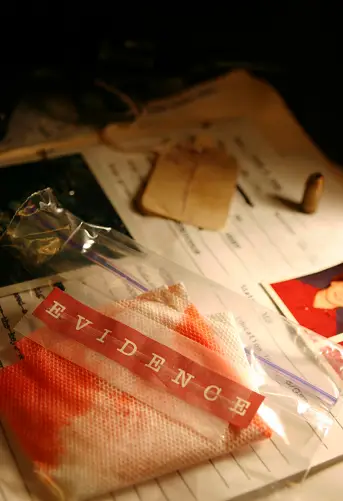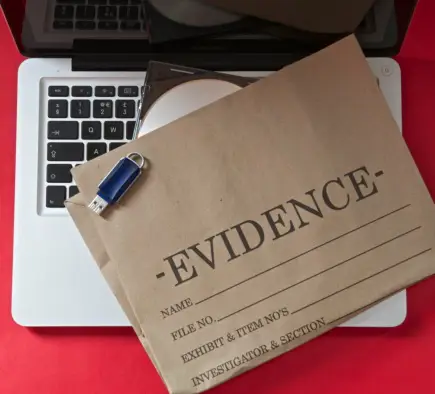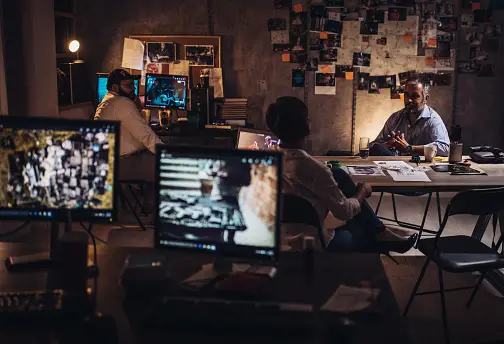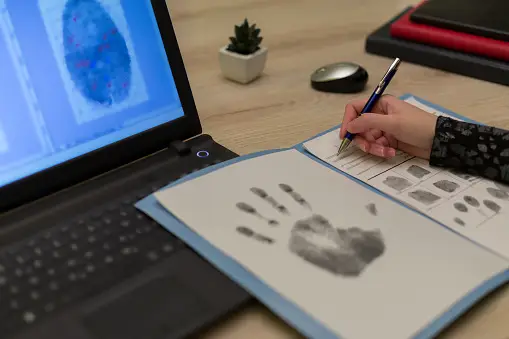Have you ever wondered why courts rely on evidence exhibits like a gripping plot twist in a legal drama? Well, buckle up because we’re about to dive into the riveting world of evidence exhibits and unravel their pivotal role in the courtroom. These seemingly mundane pieces of proof hold the power to sway decisions, paint vivid pictures, and ultimately determine the course of justice. Join me on this journey as we explore the significance of evidence exhibits and how they transform the legal battleground into a compelling theater of truth.
What Constitutes Evidence Exhibits In Court?
Defining Evidence Exhibits:
At the heart of the legal spectacle, an evidence exhibit serves as a tangible manifestation of the often abstract and intricate arguments presented in court. Broadly defined, an exhibit is any item, be it tangible or intangible, that a party introduces to substantiate its case or defense. These exhibits become visual storytellers, offering judges and jurors a concrete and visual representation of the contested facts.

Types of Evidence Exhibits:
1. Documentary Evidence:
Documents, ranging from contracts and emails to official letters, form a significant category of exhibits. They create a chronological paper trail that not only narrates events but also serves as a foundational element for legal arguments.
2. Photographic Evidence:
In an era dominated by visual information, photographs wield considerable power in the courtroom. Whether depicting a crime scene, injuries, or crucial events, photographs convey a depth of detail that verbal descriptions often struggle to capture.
3. Physical Objects:
Tangible items, such as weapons, clothing, or any object relevant to the case, can be presented as exhibits. These objects transcend their materiality. In doing so, they become key pieces of the puzzle that provide a tangible connection to the events in question.
4. Digital Evidence:
As technology advances, digital evidence assumes a prominent role in courtrooms. This category includes emails, social media posts, surveillance footage, and forensic data, marking a dynamic shift in the landscape of evidence presentation.
5. Audio and Video Recordings:
Recordings of conversations, interviews, or events offer an auditory or visual perspective, enhancing the court’s understanding of the presented evidence. These recordings often bring a sense of immediacy and authenticity to the proceedings.
6. Demonstrative Aids:
Charts, graphs, diagrams, and models fall under this category. These serve as visual aids to simplify complex information for judges and jurors. While not evidence in themselves, these aids play a crucial role in presenting and clarifying the substantive evidence.
Authentication and Admissibility:
For evidence exhibits to carry weight in court, they must pass the hurdles of authentication and admissibility. Authentication ensures that the exhibit is what it claims to be, establishing its origin and maintaining its integrity. Admissibility criteria, including relevance, reliability, and lack of unfair prejudice, further shape the acceptance of exhibits within legal proceedings.

The Role of Evidence Exhibits in Trial Strategy:
Strategic presentation of evidence exhibits is an art mastered by attorneys. The careful selection and presentation of exhibits are integral to crafting a compelling narrative. It also influences the perception of facts and resonates with judges and jurors. Evidence exhibits thus become pivotal components of trial strategy, shaping the trajectory of legal arguments.
Challenges and Controversies:
While evidence exhibits are indispensable for a fair legal process, challenges can arise. Disputes over authenticity, relevance, and potential prejudice may lead to heated debates over the admissibility of certain exhibits, injecting an additional layer of complexity into legal proceedings.
The Evolutionary Trajectory:
As technology continues to advance and legal practices evolve, the role and types of evidence exhibits will undoubtedly undergo transformation. The intersection of technological innovation and traditional legal norms paints a future where digital evidence takes center stage, ushering in a new era of courtroom dynamics.
The Evolution Of Digital Evidence Exhibits

In the ever-evolving landscape of the legal realm, the digital revolution has ushered in a new era, reshaping the way evidence is presented and scrutinized. This transformative wave has given rise to the evolution of digital evidence exhibits. This dynamic force has streamlined legal proceedings and also posed new challenges and opportunities within the intricate tapestry of the justice system.
The Genesis of Digital Evidence
The journey of digital evidence exhibits begins with the advent of technology in our daily lives. As computers became common and communication shifted to digital platforms, the legal community had to adapt to this digital deluge. This marked the genesis of a paradigm shift, where emails, documents, images, and videos transitioned from physical forms to bits and bytes, laying the foundation for a digital evidence landscape.
The Rise of Multimedia Presentations
One of the most obvious changes in courtrooms worldwide is the increasing reliance on multimedia presentations. Attorneys now add digital exhibits into their arguments, using the power of visuals to enhance the impact of their case. From interactive timelines to 3D visuals, digital evidence exhibits have become a storytelling medium, engaging judges and jurors more effectively.
Challenges and Authentication
However, with innovation comes a set of challenges. The authenticity and admissibility of digital evidence have become focal points of legal debates. Ensuring that digital exhibits have not been tampered with or manipulated requires heightened scrutiny. Thus, the legal community is developing rigorous standards and authentication protocols to validate the integrity of digital evidence in court.
The Proliferation of Social Media as Evidence
As social media platforms became integral to modern communication, they also became a treasure trove of digital evidence. From Facebook posts to tweets, social media content has found its way into courtrooms, shaping the narrative of cases. The legal system now grapples with the challenges of preserving and presenting dynamic, real-time digital content, adding a layer of complexity to the curation of evidence exhibits.
The Intersection of Big Data and Legal Proceedings

The era of big data has not spared the legal domain. Massive volumes of digital information are now subject to legal scrutiny. This requires advanced tools and methodologies for extraction, analysis, and presentation. Attorneys and digital forensics experts navigate through terabytes of data to distill relevant evidence. They also highlight the need for a nuanced understanding of technology within the legal profession.
The Emergence of Blockchain in Evidentiary Practices
In recent years, the legal community has turned its attention to blockchain technology as a means of enhancing the verifiability and security of digital evidence. With its decentralized and tamper-resistant nature, blockchain holds promise in ensuring digital records’ integrity. As legal professionals explore the potential of blockchain in evidentiary practices, questions of standardization and widespread adoption emerge on the horizon.
Future Horizons: Artificial Intelligence and Virtual Reality
Looking ahead, the integration of artificial intelligence (AI) and virtual reality (VR) is poised to redefine the landscape of digital evidence exhibits. AI algorithms can sift through vast datasets, identifying patterns and connections that may elude human observers. VR technologies offer immersive reconstructions of crime scenes or events, providing a level of detail and experiential understanding previously unimaginable.

Ethical Considerations and Legal Frameworks
As technology continues to advance, ethical considerations surrounding the collection and presentation of digital evidence become paramount. Legal frameworks must adapt to address privacy concerns, data ownership issues, and the responsible use of emerging technologies. Striking a balance between innovation and safeguarding individual rights remains a critical challenge for the legal community.
As we navigate this ever-changing landscape, the legal community must continue to adapt. It must ensure that the presentation and scrutiny of digital evidence remain aligned with the principles of justice, the bedrock of our legal systems. The collaborative efforts of legal professionals, technologists, and policymakers will be instrumental in charting a course that maximizes the benefits of technological progress while upholding the integrity and fairness of our legal processes.
Challenges Faced in Admitting Digital Evidence Exhibits in Legal Cases
In an era dominated by the omnipresence of digital artifacts, the courtroom transforms into a theater where the dynamics of authenticity, chain of custody, and the nuanced understanding of technology converge in a delicate dance.
The Digital Evidence Dilemma: Navigating Intangibility
In the traditional realm of evidence, physical objects and documents are tangible entities presented before the court. However, the digital evidence landscape is characterized by intangibility, residing in the realms of binary code and electronic pulses. The challenge lies in transforming these virtual traces into a format admissible and comprehensible to legal professionals, judges, and jurors.
Authentication Woes: Proving Digital Integrity

Authentication stands as a cornerstone in evidentiary proceedings. However, in the digital sphere, proving the integrity of evidence becomes a formidable task. Digital artifacts are susceptible to manipulation or fabrication, demanding a rigorous demonstration of the reliability of collection and preservation methods. Establishing a digital fingerprint that withstands the scrutiny of opposing counsel is an ongoing challenge that necessitates a deep understanding of digital forensics.
Hurdles in Chain of Custody: Safeguarding the Digital Trail
Maintaining an unblemished chain of custody is crucial for the credibility of any evidence. Nevertheless, the digital trail presents a unique set of challenges. Remote access, accidental modifications, or intentional alterations are constant threats. These require legal practitioners to implement stringent protocols and technological safeguards to ensure the unassailable integrity of digital evidence from its discovery to its presentation in court.
Technical Jargon vs. Legal Understanding: Bridging the Divide
As legal professionals strive to present digital evidence, they face the daunting task of bridging the communication gap between technical jargon and the legal comprehension of judges and jurors. Effectively translating complex technological concepts into layman’s terms without oversimplification is a delicate art. Failure to convey the significance of digital evidence may lead to misinterpretation, skepticism, or even dismissal, underscoring the importance of a nuanced presentation strategy.
Evolving Legal Standards: Adapting to the Digital Age
The rapid evolution of technology outpaces the development of clear legal standards for the admissibility of digital evidence. Courts grapple with establishing consistent criteria. Additionally, legal professionals also navigate uncharted waters to align the admission of digital evidence with established legal principles. Precedents continue to emerge, shaping the contours of digital evidence admissibility in a constantly changing legal landscape.
Conclusion: The Ongoing Dialogue Between Law and Technology
As we stand at the crossroads of law and technology, the challenges surrounding the admission of digital evidence exhibits persist as a dynamic and evolving facet of legal practice. Beyond influencing the outcomes of individual cases, this ongoing dialogue shapes the broader landscape of jurisprudence in the digital era. Armed with an understanding of the multifaceted challenges presented herein, legal practitioners must navigate this complex terrain to ensure the seamless integration of digital evidence into the fabric of legal proceedings.
How does the presentation of evidence exhibits contribute to trial strategy?
Attorneys strategically select and present evidence exhibits to craft a compelling narrative. The careful choice and presentation of exhibits are integral to influencing the perception of facts, resonating with judges and jurors, and shaping the trajectory of legal arguments.
Can you provide examples of evidence exhibits?
Certainly! Examples include documents like contracts and emails, photographs depicting crime scenes or injuries, tangible items such as weapons or clothing, digital evidence like emails and social media posts, and audio or video recordings. Demonstrative aids, such as charts or diagrams, also fall under this category.
How has the evolution of technology impacted evidence exhibits in legal cases?
The digital revolution has reshaped evidence presentation, giving rise to digital evidence exhibits. This includes the rise of multimedia presentations, challenges in authenticating digital evidence, the proliferation of social media content as evidence, and the integration of blockchain, AI, and VR technologies in the courtroom.
What are the ethical considerations surrounding the use of digital evidence?
Ethical considerations include addressing privacy concerns, ensuring responsible use of emerging technologies, and establishing legal frameworks that balance technological innovation with safeguarding individual rights. Striking this balance remains a critical challenge for the legal community.
How do legal standards adapt to the evolving landscape of technology in evidence presentation?
Legal standards for admitting digital evidence continue to evolve, with courts grappling to establish consistent criteria. Precedents are emerging, shaping the contours of digital evidence admissibility, and legal professionals navigate uncharted waters to align technological advancements with established legal principles.
Other Related Articles:
- The Importance of Presenting Compelling Evidence Exhibits in Legal Proceedings
- The Role of Evidence in Court Hearings: A Deep Dive into Legal Proceedings
- Doxing: Understanding Its Implications and Protections in the Digital Era
- Protecting Your Identity in the Digital Age: Top Strategies
- Social Media and Text Messaging How Technology Impacts Evidence in a Family Law Case
- Surviving a Digital Nightmare: The Risks of Online Dating
- Digital Innovations in Serving Court Papers: Pros, Cons, and Future Trends
- A Guide to Creating Persuasive Evidence Exhibits for Court Cases
- The Evolution of Forensic Science and Its Impact on Evidence Exhibits
- Common Mistakes to Avoid When Handling Evidence Exhibits in Trials
Bryan Fagan, a native of Atascocita, Texas, is a dedicated family law attorney inspired by John Grisham’s “The Pelican Brief.” He is the first lawyer in his family, which includes two adopted brothers. Bryan’s commitment to family is personal and professional; he cared for his grandmother with Alzheimer’s while completing his degree and attended the South Texas College of Law at night.
Married with three children, Bryan’s personal experiences enrich his understanding of family dynamics, which is central to his legal practice. He specializes in family law, offering innovative and efficient legal services. A certified member of the College of the State Bar of Texas, Bryan is part of an elite group of legal professionals committed to ongoing education and high-level expertise.
His legal practice covers divorce, custody disputes, property disputes, adoption, paternity, and mediation. Bryan is also experienced in drafting marital property agreements. He leads a team dedicated to complex family law cases and protecting families from false CPS allegations.
Based in Houston, Bryan is active in the Houston Family Law Sector of the Houston Bar Association and various family law groups in Texas. His deep understanding of family values and his professional dedication make him a compassionate advocate for families navigating Texas family law.




